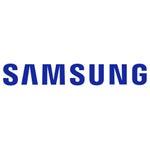News
Will the Samsung Galaxy S26 Ultra's 200MP Camera Dominate Smartphone Photography in 2026?
Will the Samsung Galaxy S26 Ultra's 200MP Camera Dominate Smartphone Photography in 2026?
Smartphone cameras have evolved from mere conveniences to professional-grade tools, and Samsung seems poised to make its boldest leap yet. Industry leaks suggest the Galaxy S26 Ultra will feature a groundbreaking 200MP Sony sensor—a technological marvel that could potentially outclass every smartphone camera currently on the market, including Apple's upcoming iPhone 17 Pro.
This isn't just another incremental upgrade. The rumored 1/1.1-inch Sony IMX9-series sensor, detailed in Sony's mobile image sensor technology portfolio, represents a 56% larger surface area than the 1/1.3-inch ISOCELL HP2 of the S25 Ultra. This revolutionary sensor technology enables:
- Unprecedented light capture, which improves low-light performance
- Improved dynamic range, retaining details in both the darkest shadows and brightest highlights.
- AI-enhanced pixel-binning for ultra-sharp 12.5MP images
- 8K/60fps video recording, a first for smartphones (if thermal constraints are managed)
However, megapixels alone don't tell the whole story. The real question is: Will this sensor ship in 2026, or will Samsung delay it to the S27 Ultra? More importantly, can it outperform the computational photography mastery of Apple's iPhone 17 Pro? Let's dive into the specs, the leaks, and what it could mean for the future of mobile photography.
Breaking Down the S26 Ultra's Camera Revolution
The 200MP Sony Sensor: A Deep Dive
The shift from Samsung's in-house ISOCELL sensors to Sony's 200MP behemoth is a significant development. The larger sensor size (1/1.1 inches) ensures better light capture than most smartphone sensors, including the iPhone 15 Pro Max's 1/1.28-inch primary camera. Additionally, dual-layer transistor pixel technology, borrowed from Sony's professional cameras, will bring:
- Faster readout speeds, reducing rolling shutter in fast-moving scenes
- Improved quantum efficiency for better light conversio
- Advanced pixel binning, combining 16 pixels into one to create 2.4µm super-pixels, ensuring brighter 12.5MP low-light shots and reduced noise in shadows
Real-World Performance: What to Expect
While the 200MP capability sounds impressive on paper, most users will benefit from the AI-optimized 12.5MP mode, which delivers DSLR-like detail without the massive file sizes. The Enhanced Nightography will likely be 2-3 stops better than the S25 Ultra, delivering crisp, bright shots in low light. The 200MP "Pro Mode" will be useful for extreme cropping (offering effective lossless 10x zoom) and even large prints (billboard-quality resolution).
Potential Challenges & Production Delays
There are rumors that Samsung may face delays in the release of this sensor, potentially pushing it to the S27 Ultra (2027) due to:
- Production bottlenecks with Sony's new fabrication process
- Thermal management issues for sustained 8K/60fps recording
- The high cost of the sensor, which could add $100+ to manufacturing costs
Galaxy S26 Ultra vs. iPhone 17 Pro: The Ultimate 2026 Showdown
Here's how the S26 Ultra stacks up against the iPhone 17 Pro in terms of key specs:
| Feature | Galaxy S26 Ultra (Rumored) | iPhone 17 Pro (Expected) |
| Main Sensor | 200MP Sony 1/1.1" | 48MP stacked Sony sensor |
| Pixel Size | 1.22µm (up to 2.4µm binned) | 1.4µm (up to 2.8µm binned) |
| Low-Light Tech | AI Night Mode + larger sensor | Photonic Engine + LiDAR |
| Zoom Capability | 10x periscope (200MP crop-zoom) | 6x tetraprism (hybrid zoom) |
| Video | 8K/60fps, 4K/120fps | 8K/30fps, 4K/120fps Dolby Vision |
Key Battlegrounds
1. Low-Light Photography: The S26 Ultra captures 56% more light with its larger sensor, while the iPhone 17 Pro uses computational processing to merge multiple exposures with its Photonic Engine.
2. Zoom Performance: Samsung's 200MP sensor enables lossless crop-zooming, whereas Apple relies on a hybrid zoom that combines optical and computational methods.
3. Video Capabilities: The S26 Ultra may have an advantage with 8K/60fps video (if thermal constraints are managed), while the iPhone 17 Pro offers better stabilization and Dolby Vision HDR.
What You Might Be Overlooking About the Galaxy S26 Ultra's Camera
1. The Hidden Cost of 200MP
- Storage demands: A single 200MP RAW photo could consume over 150MB.
- Processing power: Handling these massive files will require next-gen Exynos 2600 or Snapdragon 8 Gen 5 chips.
- Battery impact: Continuous 200MP shooting may drain the battery up to 40% faster.
2. Why Samsung is Switching to Sony
- Chip shortages: Samsung's ISOCELL production can't meet the growing demand for sensors.
- Patent licensing: Sony holds key patents for the dual-layer transistor technology.
- Market positioning: Using Sony sensors adds a "premium" perception to the Galaxy brand.
3. The iPhone's Secret Weapon: Computational Photography
Apple continues to lead in computational photography with features such as Deep Fusion for pixel-level processing, Smart HDR 5 for improved highlight recovery, and LiDAR-powered Night Mode portraits.
Frequently Asked Questions
1. Will the S26 Ultra's camera be noticeably better than the S25 Ultra's?
Yes. You can expect improvements in low-light performance, zoom detail retention, and video dynamic range.
2. Is 200MP overkill for smartphone photography?
For most users, yes. The real value lies in AI-downsampled 12.5MP images, which provide better detail than native 12MP sensors, and future-proofing for AR/VR applications.
3. Should I wait for the S26 Ultra or buy the S25 Ultra now?
Wait, if you're a photography enthusiast and want the best low-light performance. Consider the S25 Ultra if you prefer a more mature device and anticipate potential price drops following the release of the S26 Ultra.
Related Articles
- Samsung Galaxy S26 Ultra Camera Leaks
- Samsung Galaxy S26 Ultra: Battery Upgrade
- Samsung Galaxy S26 Camera to Get Thinner with Inkjet Technology
Conclusion:
- The Galaxy S26 Ultra's 200MP camera could redefine smartphone photography with its larger sensor, advanced AI, and 8K video capabilities.
- However, Apple's computational photography innovations may still give the iPhone 17 Pro a competitive edge, particularly in low-light and portrait modes.
- Whether the S26 Ultra can outperform the iPhone 17 Pro in the real world will be the ultimate test in 2026.












